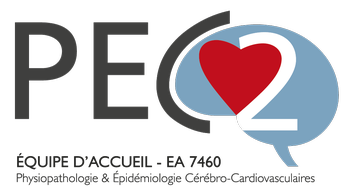Endovascular Therapy or Medical Management Alone for Isolated Posterior Cerebral Artery Occlusion: A Multicenter Study
Résumé
BACKGROUND: Whether endovascular therapy (EVT) added on best medical management (BMM), as compared to BMM alone, is beneficial in acute ischemic stroke with isolated posterior cerebral artery occlusion is unknown. METHODS: We conducted a multicenter international observational study of consecutive stroke patients admitted within 6 hours from symptoms onset in 26 stroke centers with isolated occlusion of the first (P1) or second (P2) segment of the posterior cerebral artery and treated either with BMM+EVT or BMM alone. Propensity score with inverse probability of treatment weighting was used to account for baseline between-groups differences. The primary outcome was 3-month good functional outcome (modified Rankin Scale [mRS] score 0-2 or return to baseline modified Rankin Scale). Secondary outcomes were 3-month excellent recovery (modified Rankin Scale score 0-1), symptomatic intracranial hemorrhage, and early neurological deterioration. RESULTS: Overall, 752 patients were included (167 and 585 patients in the BMM+EVT and BMM alone groups, respectively). Median age was 74 (interquartile range, 63-82) years, 329 (44%) patients were female, median National Institutes of Health Stroke Scale was 6 (interquartile range 4-10), and occlusion site was P1 in 188 (25%) and P2 in 564 (75%) patients. Baseline clinical and radiological data were similar between the 2 groups following propensity score weighting. EVT was associated with a trend towards lower odds of good functional outcome (odds ratio, 0.81 [95% CI, 0.66-1.01]; P=0.06) and was not associated with excellent functional outcome (odds ratio, 1.17 [95% CI, 0.95-1.43]; P=0.15). EVT was associated with a higher risk of symptomatic intracranial hemorrhage (odds ratio, 2.51 [95% CI, 1.35-4.67]; P=0.004) and early neurological deterioration (odds ratio, 2.51 [95% CI, 1.64-3.84]; P\textless0.0001). CONCLUSIONS: In this observational study of patients with proximal posterior cerebral artery occlusion, EVT was not associated with good or excellent functional outcome as compared to BMM alone. However, EVT was associated with higher rates of symptomatic intracranial hemorrhage and early neurological deterioration. EVT should not be routinely recommended in this population, but randomization into a clinical trial is highly warranted.
